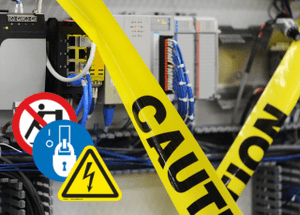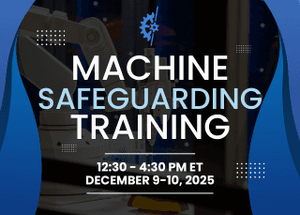Improve Your 2019 Warning Labels on Products

Improve Your 2019 Warning Labels on Products
Author: Angela Lambert, Head of Standards Compliance at Clarion Safety
Safety Observations from
Our Vantage Point
As 2018 comes to a close, it’s a time to reflect on what the year brought from
a safety perspective – and to look ahead at how to make 2019 our safest year yet.
Part of our promise to you, our clients and partners in safety, is to help you stay up-to-date on visual safety communication trends – and keep you there. With our vantage point here at Clarion Safety, we’re in the perfect position to do that.
As a company, we’ve been involved on the U.S. (ANSI) and international (ISO) standards committees in our field for decades. In the past several years, I’ve become a member of the ANSI Z535 Committee for Safety Signs and Colors and the U.S. TAG to ISO/TC 145. With our company’s passion for safety and commitment to being a resource for standards and warnings, the role is more than just contributing to committee work. I act as a liaison to bring expertise back to our company, and then work directly with our partners, safety engineers and workplace safety professionals on the potential impact to their warnings program.
Top Tips to Bolster Your Safety Label and Sign Programs
By diving
deep into both sides of the spectrum – the standards arena and hands-on work
with safety engineers and workplace safety professionals – we’ve put together
observations on top trends to be aware of. Read on for a look at our top three
tips to help improve your safety label and sign program this coming year.
Safety Tip #1: Greater Use of Symbols
and More Format Options
Labels and signs need to communicate warning and instructional information
efficiently and effectively. The greater use of standardized ISO safety symbols
is a major trend to be aware of – and incorporate into your warnings. ISO’s
standardization efforts means that we all have access to a worldwide visual
language of graphical symbols. They can be used on your safety labels, signs
and tags to overcome language barriers – a key attribute for a global economy
and workforce.
When it comes to format options, ISO 3864-2’s update in 2016 included a new “wordless” safety label design format that conveys risk severity. This new format uses what ISO calls a “hazard severity panel” but no signal word. It communicates the level of risk through color-coding of the hazard severity panel. This format option eliminates words – making translations unnecessary. It’s not always easy to decide when your labels and signs should use symbols and text, or symbols alone. We’re here to help review your situation and recommend solutions that best fit your needs.
Safety Tip #2: Customized
Warnings
From our
work with product safety engineers and workplace safety professionals, we know
first-hand that safety isn’t a one-size-fits all solution. It’s a process. It
involves understanding your market, product and audience, risk assessment, and
crafting the right, personalized warning needed for the situation –
whether it’s a safety label, sign or tag and whether it’s placed on a product
or on the wall in a facility. When we work with clients, we listen to the specific needs,
goals and challenges at hand, and then recommend solutions that fall within the
framework of today’s best practices. We also understand that some clients are
looking for more immediate ways to create a custom product – and that’s why
we’ve developed solutions for that, too. Our
custom label and sign designer tool allows you to choose from an
assortment of best practice ANSI/OSHA and ISO designs (along with our most
popular sizes and materials) to create your label, sign or tag in three simple
steps.
Safety Tip #3: Supplier
Consolidation/Inventory Management
It’s important not to forget about the more ‘behind-the-scenes’ work in visual
safety communication. Here, I often find that clients struggle most with
juggling multiple vendors. Having more of a one-stop shop for warnings and
printing needs can be beneficial in many ways to consolidate your supplier base and streamline
your supply chain. The result is often an improvement in your bottom line and
satisfaction in terms of on-time deliveries and efficiency. Keep in mind that
Clarion Safety specializes in both
equipment safety
labels and workplace safety
signs and
tags – but we also
provide clients with a range of custom printing options related to identification, asset
management and branding, including graphic overlays, dataplates/nameplates,
serialization and asset tags and labels.
When it comes to inventory management concerns, you may want to consider kitting services to simplify ordering and inventory management. Here at Clarion, kits are a customer favorite, as all the labels or signs needed for a specific product or facility location arrive as one complete package – for added efficiency and safety.
No matter what your struggle points may be – from uncertainty over meeting label best practices to budget restraints – remember that our team at Clarion Safety is here to help. We have the experience and flexibility to solve these types of challenges – and look forward to our partnership in 2019 to continue to make advances in safety together.



